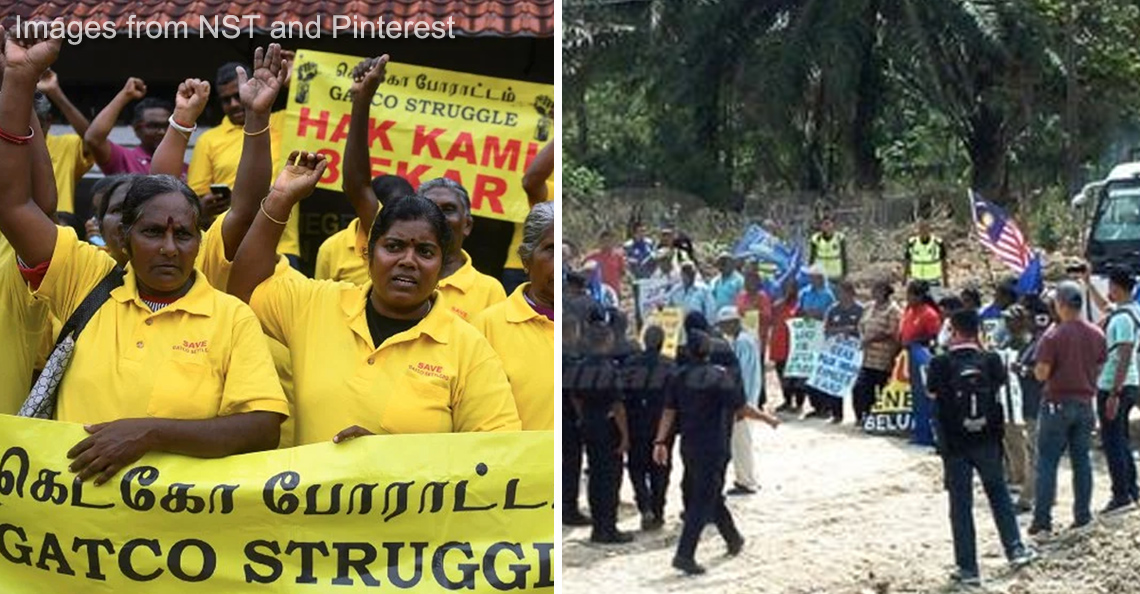5 projects to help underprivileged Malaysians that EPIC FAILED

- 3.3KShares
- Facebook3.1K
- Twitter21
- LinkedIn32
- Email47
- WhatsApp92
It’s a sad fact, but news of people getting busted for corruption is not an oddity here in Malaysia. Ever since the Malaysian Anti Corruption Commission (MACC) became more active in the past months, news of people getting busted or investigated crops up almost weekly.
However, there’s something different about the most recent probe. The MACC had frozen some RM150 million, believed to have been swindled from federal funds allocated to develop Sabah’s rural area. However, the MACC’s estimated the amount to be a lot higher than that. From the RM7.5 billion allocated for projects involving clean water, electricity and roads in Sabah, it was believed that at least RM1.5 billion was siphoned off from various parts of the fund for the past six years.
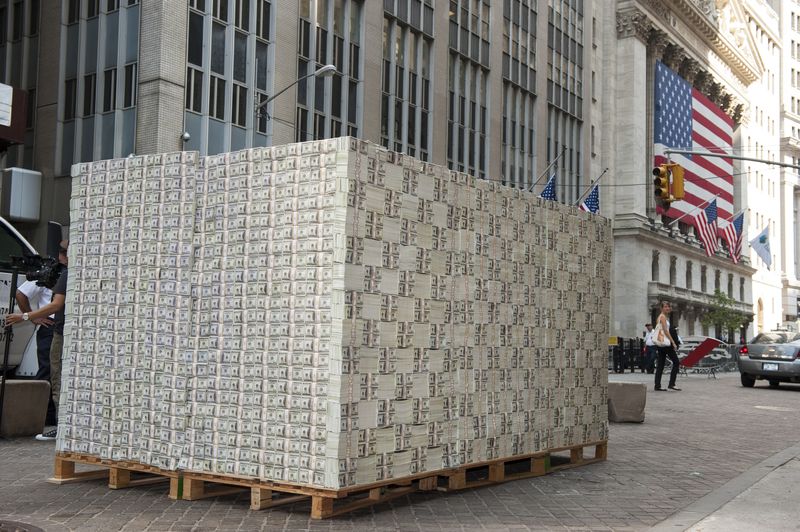
The recent investigations was a follow up from last year’s Sabah Water Department scandal, and the MACC believes it was done through a combination of faking documents and making cutbacks in certain areas. e.g. declaring the cost of a water pump to be RM500, but using a cheaper water pump for RM100 in the actual project, (yay RM400 embezzled!).
It was reported that the MACC was able to sniff out the swindlers by tip-offs from the public as well as by alerts from the Bank Negara Malaysia’s Suspicious Transaction Alert System. Besides projects to provide water, electricity and roads, the money was also believed to have been swindled from programs that provide food for poor students, i.e. the swindlers are literally stealing the food out of poor people’s mouths.

The exact projects the money possibly came from have yet to be revealed, but we found a few other interesting projects for the underprivileged that failed for weird reasons, resulting in a loss of funds. Projects like…
1. That time when computer labs were built where there are no electricity
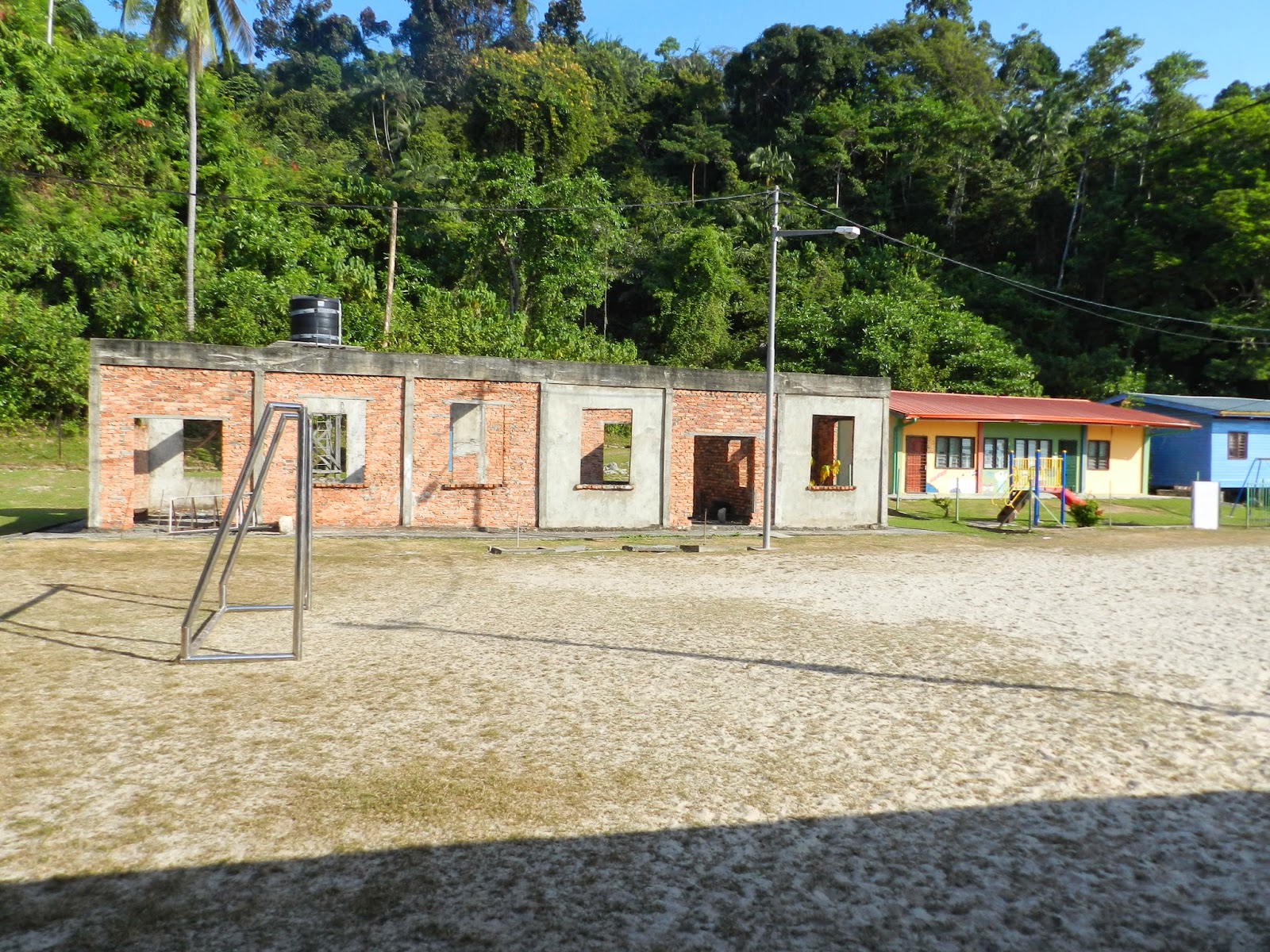
What better way to define progress than computer literacy? In 2007, the Education Ministry started a scheme that aimed to provide 300 schools in Sabah with computer labs, which are usually buildings filled with computers and air conditioning separate from existing school buildings. Three years later, guess how many computer labs were finished? Whatever number you’re thinking, you should go lower.
In 2010, the number of completed school computer labs throughout Sabah was three. The other 297 were in various stages of completion, ranging from 20 to 90% done. But hey, three is better than none, right? Well…
“The lab is of poor quality, and it’s not safe for the students to enter. There are cracks all over the place and parts of the ceiling have either dropped to the floor or is hanging down. Also there is also no drainage around the lab to take away the rainwater.” – Awang Pasih Abdul Kahar, chairman of Kampung Gentisan’s Security and Development Committee, for MalaysiaKini.
Some schools received computers even before having labs to put them in, and it was claimed that the Education Ministry only had funds to build 250 labs out of the planned 300.

To make matters worse, some of the computer labs were built in schools situated in areas without access to phone lines and electricity. According to Datuk Masidi Manjun, Sabah’s Tourism, Culture and Environment Minister, this was probably due to the project being given to contractors appointed by the Peninsula.
“Most of the contractors are unfortunately appointed by the headquarters in the peninsula and most of them are not aware of our situation here, they do not know the constraints and how it is in Sabah. In addition to this, they have too many projects in hand. It is sad because the government spends a lot of money on a project and in the end, it is not even completed. This, somehow, is nothing new here,” – Datuk Masidi Manjun, for the Borneo Post.
So how much money are we talking about here? The three completed-ish labs and 297 half-finished labs, according the Auditor-General’s report, used up RM98.9 million out of the RM113.73 million (about 86%) allocated for the construction costs. And since the contractors failed to meet the deadline of the project despite a six-months extension, the Education Ministry lost another RM3.17 million in ‘liquidated and ascertained damages’.
The Education Ministry had since admitted that the report had been accurate, and it laid out some steps in resolving the issue. No further reports there.
2. That time when the roads were so bad, a village chief was mistaken as a sack of sugar
Here’s something to think about the next time you grudgingly pay road tolls: good, sturdy roads are apparently pretty expensive to build. Especially if you live in hilly Ba’kelalan, Sarawak.
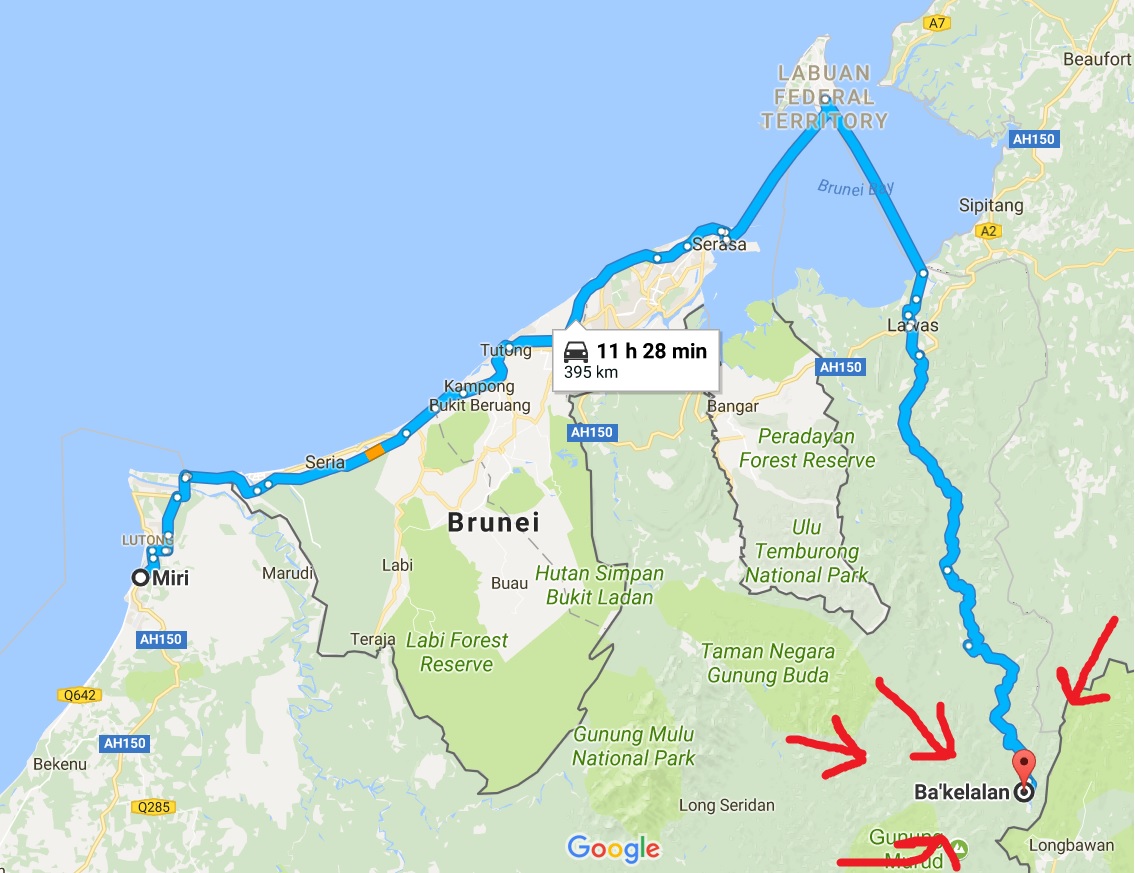

Getting there from the nearest town, Lawas, used to take sometime between eight hours and two days, depending on the weather. The 75 km logging road can be really muddy following a heavy downpour, and inhabitants of the villages in Ba’kelalan often had to worry about being cut off from Lawas during the monsoon season. A planned Long Luping-Ba’kelalan road was estimated to cost RM250 million, but the road was eventually built at only a quarter of the cost. How?
Back in 2009, the government included the Long Luping-Ba’kelalan road in its ‘Jiwa Murni‘ project, which basically utilizes the military to enhance the living conditions in rural areas. In Ba’kelalan’s road case, soldiers set to work on the logging road by compacting the earth, spreading a thin layer of crushed stones over it and covering the whole mess up with tar. Roads done this way cost about RM3,000 per kilometer, compared to conventional roads which cost between RM10,000-15,000 per kilometer (or RM2.09 million per km by Jiwa Murni vs RM6 million per km by conventional methods for another road, according to Deputy Zahid Hamidi four years later).

The completion of the road at the end of 2011 was reported to significantly improve the livelihood of Ba’kelalanians. Since than, other roads have been built through the Jiwa Murni program, but it turned out that the convenience of the cheap roads were short-lived.
In 2013, the community of Ba’kelalan filed a court injunction against the Malaysian Armed Forces to stop them from continuing the construction of another road from Ba’kelalan to Bario. The community leaders alleged that the roads were built without first doing an Environmental Impact Assessment (EIA), among other things, and the road construction severely polluted their water supply. The construction was also allegedly done without taking into account whose land it goes through.
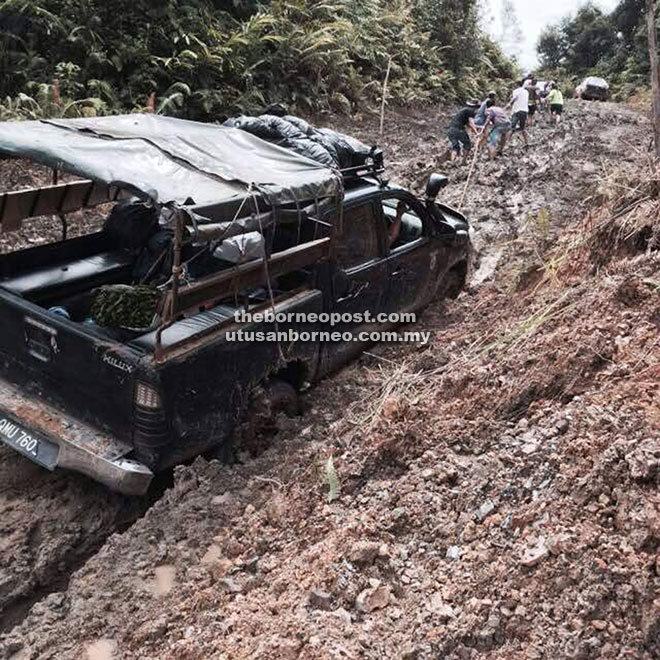
Worst still, the roads didn’t last, being usable for a short time before it turned back into muddy trenches. The 2016 Auditor’s General report also heavily criticized the Jiwa Murni roads, stating that:
“Quality of work was less satisfactory. Road shoulders and drains were not built… There were potholes, uneven and muddy road surfaces. Road maintenance was less satisfactory… Besides faded road lines, there were untrimmed wild plants and grasses along road shoulders… safety of the roads built were ‘less satisfactory’ as they were steep and winding, with ‘no slope protection’.” – AG’s report 2016, quoted by the Borneo Post.
In some places, the potholes became so big that our editor actually looked tiny next to it:
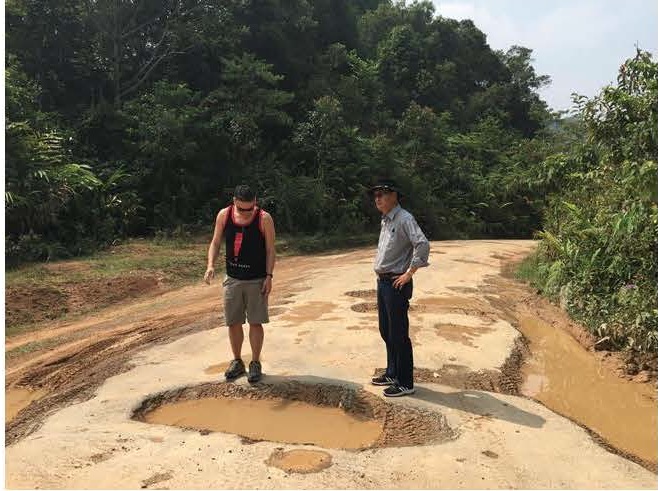
There was a story told to him there that once a village chief was riding on the back of a truck down one of these roads. One of the potholes caused the chief to fall off, and the truck’s driver didn’t notice him, so he just laid in a heap on the road until another truck came along. The guys in the other truck saw the chief and thought he was a sack of something precious, vowing to split the bag evenly if it’s sugar. Thankfully, the chief was rescued and hospitalized for only a week.
Regardless of mud tracks and potholes, the AG report also stated that a sum of RM254 million had been spent on establishing and making 11 of these roads in Sarawak (some say RM743 million for 1,223 km). That’s a lot of money and effort for a few months’ convenience.
3. That time when children’s hopes for a new school were left hanging
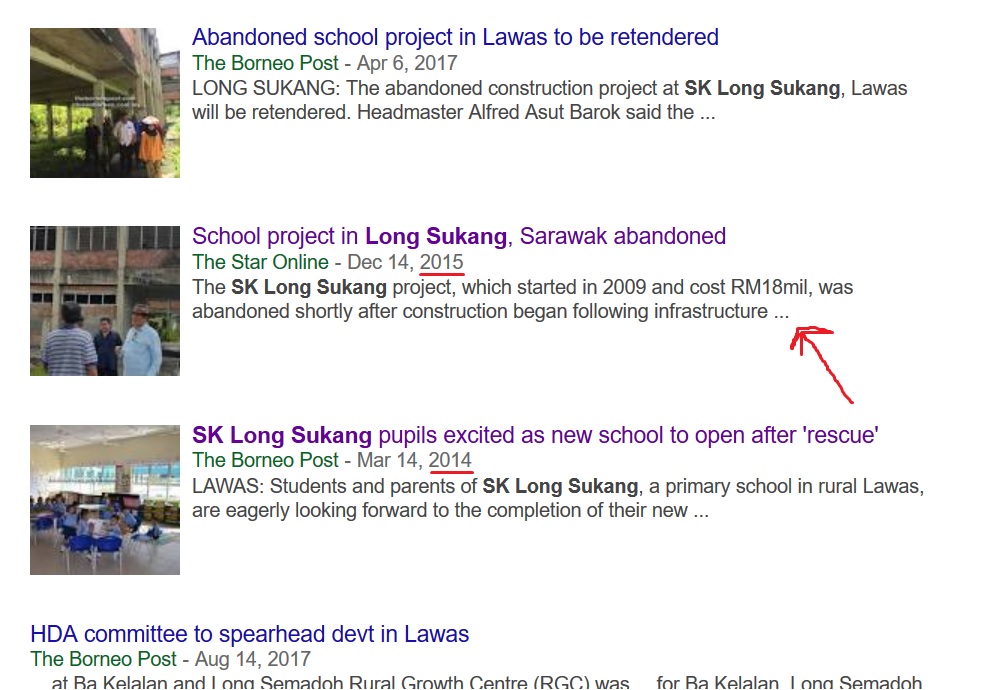
Rural schools can be very different from schools in the city, in that the conditions can be unimaginable for city folk. While it can be expected that some of them are run down and old with insufficient facilities, the fact is that some of the schools don’t even have water or electricity supplies.
According to a report back in 2014, SK Long Luping in Lawas, for example, was built without a water supply system included in the plans, despite there being an allocation of RM70,000 to build a gravity fed water system. The system was never built as the allocation had been exhausted. The school’s parent-teacher’s association, on their own initiative, had to build their own dam at a small stream nearby and laid down pipes to supply the school with water, using their own money.
While a water supply system might be within the abilities of a parent-teacher association, building a school’s main building using their own funds and energy might not be realistic. The SK Long Sukang in Lawas faced the problem of their school being old, with some teachers not having a place to stay and ceilings falling down and what not. So a new school was being built for them back in 2009. The project cost the government RM18 million (RM25 million according to a 2017 report), and the project went smoothly for some time, with most of the school being completed. Most.
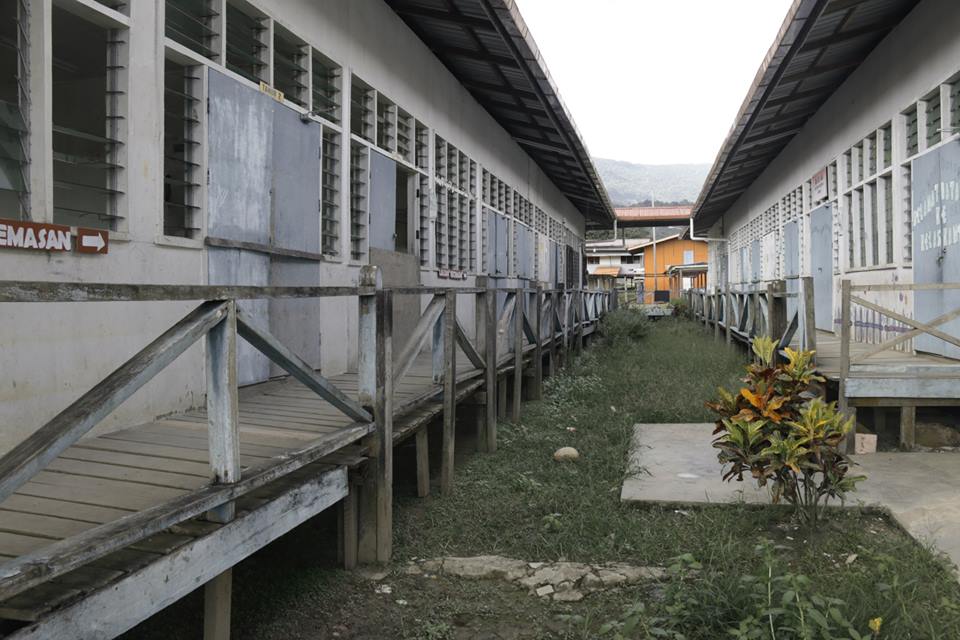
Construction then stopped due to the fact that the half-completed main building was standing on unstable ground, near a dangerous slope. In 2014, the villagers’ hopes were raised again when a joint inspection for a Certificate of Practical Completion (CPC) was done by the authorities. A contractor that finished several other abandoned school projects (yep, there were others) even stepped up to rescue the abandoned project, but as of the end of 2015, the villagers informed the media that the contractor had not returned since, and there’s no telling when the project will continue.

The Education Ministry told the Star back then that they were still investigating why the project was left unfinished, but that’s about it… until April this year, when it was announced that the project will be re-tendered. Let’s hope that the teachers at SK Long Sukang, who are squatting at the nearby Agricultural Department’s quarters, will have a proper place to stay soon.
4. That time a type of BR1M gave away faulty chainsaws

For those of you who’ve never heard of it, the 1Azam program was established back in 2010 to help people improve their sosio-economic statuses and break out of the poverty cycle by involving them in small-scale businesses like baking and tailoring. Some participants of the program reported varying degrees of success the program brought them, with one of them even claiming that the 1Azam program is like ‘the oxygen that enables her and her family breathe sighs of relief‘. There’s even a research paper documenting the success of the 1Azam programs.
However, the RM1.3 billion program came under heavy criticism from various sides in recent years. There were allegations in 2014 of the funds for the 1Azam program being misused.
“I think this is time the Auditor-General should intervene directly and immediately audit so that 1Azam funds will not continue to be abused. I think it’s very scandalous because the moment the people know the whole gist and details of the scheme and the alleged misappropriations go to the public, the disillusionment is even bigger than NFC,” – Rafizi Ramli, PKR’s strategy director, as reported by Malay Mail Online.
So investigate they did. The report revealed some disturbing things, such as how the equipment to start businesses given to 1Azam participants were sold off by the participants for money. Eight out of ten participants did receive equipment worth RM5,000 each as per the program, but these equipments were often faulty, spoilt or did not last long. This may be partly due to the 22 companies who supplied RM8 million‘s worth of equipment to the program not having any specification details or supply standard operating procedures.

The Public Accounts Committee (PAC) called for a re-investigation of the scheme based on the Auditor General’s report, as they claimed it suffered heavy losses through poor management. In a report tabled in Dewan Rakyat last year, they revealed that some of the programs did not profit the participants at all. 111 participants involved in a RM1 million chalet services scheme in Merbok, Kedah, have yet to see the profits from the scheme. Another project in nearby Bandar Baru involves Burung Walit (swallows), and while each of the 67 participants received RM10,000 in the beginning, none of them actually made any money two years later.
However, despite the holes in the program, the PAC did admit that it helped some of the rakyat in the lower income groups, and urged for the scheme to be continued with some changes based on their recommendations.
5. That time when hydroelectric dams turned out to be just dams

In the past, the government had tried to bring electricity to remote villages deep in the jungle through a program called the Rural Electrification Programme (REP). Since connecting wires to these faraway villages would be expensive and impractical, the REP planned to electrify these villages by solar panels and mini-hydroelectric dams.
It’s an ongoing venture, and as of October last year, the AG reported that performance in this area was quite satisfactory, with 92.8% of the houses that applied for electricity getting a 24-hour supply. However, isolated reports painted a contrasting picture. A 2015 report by the Borneo Post revealed that a micro-hydro dam in Kampung Kerenggas (200 km from Kuching) had been a failure, and had been so for quite some time now.
“For four years now it has become a white elephant. The wiring and the distribution cables are hanging lifelessly and an eyesore, not only to the villagers but also to visitors.” – a Kampung Kerenggas villager, for the Borneo Post.
Even though they had raised the matter to their assemblyman, nothing was done about it. The villagers can’t even switch to their solar panels for an alternative source of electricity, as the cables from the dam were also connected to the solar panel assemblies. For now, they had to rely on portable generators that use pricey fuel for 4 to 5 hours of electricity each day.

The village of Long San also faced the same predicament, as the micro-hydro dam installed at the nearby Sungai Kelame had never produced electricity since it was installed in 2010. They had high hopes for the project too, as some of the villagers gave up their land for free for the purposes of the dam and a transformer to be built.
To be fair, some of the dams worked, and judging by the lack of reports about micro-hydro dams not working as intended, perhaps the ones in Kampung Keranggas and Kampung Long San were isolated cases. Still if Sarawak fully meant to ensure that all its rural areas have access to electricity and water supplies by 2025, these are not cases to overlook.
E. That time when Eye of Arabia turned into Eye of Bangladesh
While poor planning in projects can result in wasted funds and unachieved goals, sometimes it can bring about an ironic twist. Take the case of the ‘Ain Arabia‘, or ‘Eye of Arabia‘. It was a 0.2 hectare park built in Bukit Bintang for Arab tourists to hang out, and it cost the Kuala Lumpur City Hall (DBKL) RM10 million to built the Arab-themed garden.

Artisans from Syria and Uzbekistan was involved in the architectural design and construction of the park, which features a welcome arch, gazebos, benches, palm trees and potted plants, as well as a giant bronze teapot continuously pouring water from its spout to symbolize an oasis in the city. Ayah Pin flashbacks aside, instead of wealthy Arab tourists, the ones utilizing the park the most were poor migrant workers who slept under the gazebos and wash up at the teapot fountain.
Ain Arabia had since been given to another company to redevelop as a normal park, as it had become an eyesore. No more gazebos will be built to stop vagrants from sheltering in them. The park will be redesigned as a simple park with benches.
We’re not insinuating that these projects failed due to corruption…

…but we’re not denying it either. While the failure of most of the projects we mentioned was attributed to poor planning and lack of research, with the recent busts by the MACC, corruption shouldn’t be ruled out as an underlying factor. The concept of corruption gets worse if you think of these projects as a way to help the underprivileged. In a way, it denies some children a proper education, it denies some people access to clean water and electricity, and it dashes the hopes of those living in poverty for a better life.
The MACC had stated that their focus on eradicating corruption and power abuse is built on two main thrusts:
- That the voice of the poor and underprivileged is often weak, and
- That denying them what is rightfully theirs is the greatest of travesties.
Therefore, it is up to the regular citizens of Malaysia to make it their responsibility to know about these instances and speak up against them. There’s a lesson for policymakers in the cases we’ve mentioned. Even if a project may seem cheap, if improperly planned it might cause further spending in the future. Proper planning of the project and choosing contractors suitable for the project at hand should save a lot of money, and increase the likelihood of the project functioning as intended.
For example, the recent MRT project was granted using an anonymous bidding scheme, where the tender committee did not know who applied for the tender as the companies were referred to using codenames, eg. PT1, PT2 and so on. Due to the success and timeliness of the MRT project, Datuk Seri Najib Razak had stated that the tender bidding model for the MRT project will be used for government projects in the future.
“Only after the committee had decided which proposal to accept was I given a letter to inform who the project was awarded to. It’s like the Academy Awards… I will ensure that major projects will be handled through this system. It has proven successful with each offer evaluated professionally from technical and cost aspects” – Datuk Seri Najib Razak, for the Star.

- 3.3KShares
- Facebook3.1K
- Twitter21
- LinkedIn32
- Email47
- WhatsApp92

